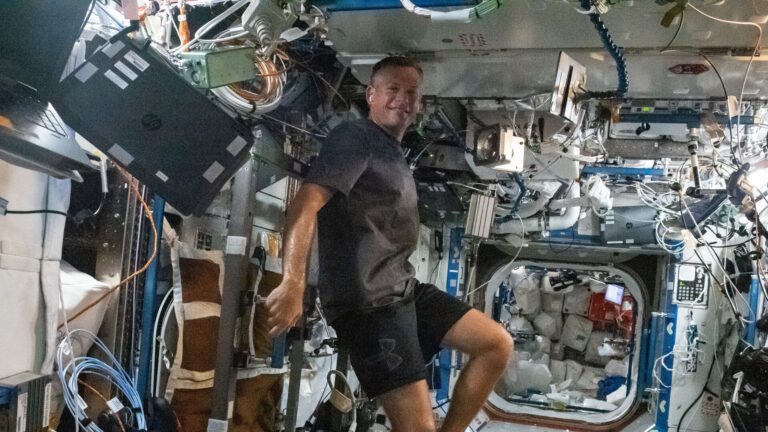09/15/2023
1446 views
50 love
One of the experiments carried out during ESA astronaut Andreas Mogensen’s mission will be to monitor his health and vital signs during his daily exercise in space.
Understanding how the human body copes with microgravity is at the center of many experiments conducted aboard the International Space Station. Although it takes astronauts about two weeks to get used to being in space, tracking how their bodies change, especially during exercise, can help researchers understand how to best help astronauts in orbit .
During his Huginn mission, ESA astronaut Andreas Mogensen will train with the SpaceWear monitor attached to his chest to measure vital health parameters, such as skin temperature and heart rate.
Small size, big impact
SpaceWear is a watch-sized device that Andreas straps around his torso during his exercises. It monitors a range of health indicators such as heart rate and variability, respiratory rate, how the body orients and moves, and skin temperature. All this at 1,000 times per second and with a battery life of 10 hours.
“Health monitors are already in use on the International Space Station, but what sets the SpaceWear monitor apart is the frequency and quality of the data it measures. Besides the long battery life, we look forward to seeing how the SpaceWear monitor can help astronauts in their daily lives on the Space Station,” says Thomas Andersen, CEO of the Danish aerospace company that developed the device.
From astronaut to firefighter
The SpaceWear monitor is designed for extreme environments. Andreas’ tests on the Space Station could pave the way for applications in dangerous situations. For example, firefighters must deal with high heat, heavy equipment, and physically demanding work. SpaceWear could monitor and provide information about medical personnel to help prevent any serious health problems and take steps to avoid them.
The health tracker can also be used by anyone who participates in extreme sports, such as drivers subjected to high g-forces during motor sports and climbers ascending high mountains in a thin atmosphere.
Learn more about Andreas’ mission science on his Page Huginn and follow his journey on social networks platforms.
